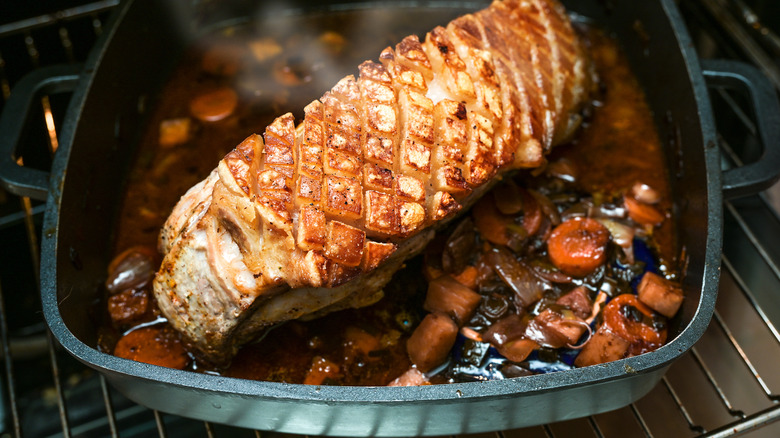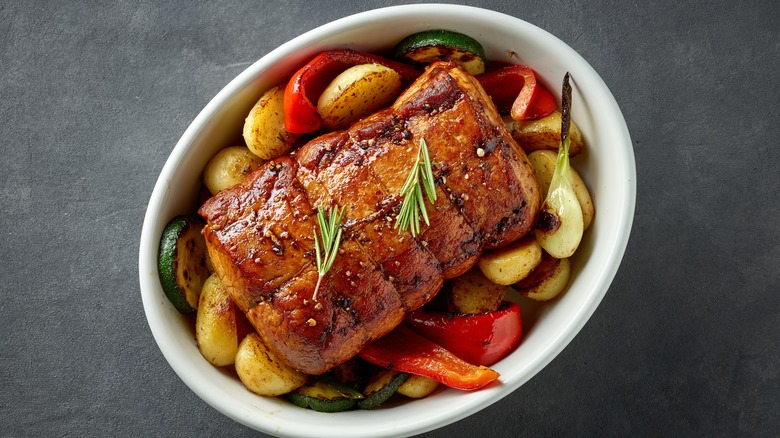A High Oven Temp Is Key For Roasted Pork With Crispy Skin
When roasted the right way, pork is a real treat for the senses. Offering a pleasant contrast of textures, it can be both tender and succulent, but also crisply caramelized with a lacy layer of audibly crunchy skin. That said, it can be a challenge to simultaneously achieve both perfectly cooked meat and a crackling crisp skin, especially since pork's exterior layer can prove tricky to render. The solution? Crank up the oven temperature.
It's normal to shy away from sizzlingly high temperatures in fear that pork will dry out. However, the reality is that low temperatures won't adequately brown the meat, nor will they effectively render fat. As a result, working with a higher oven temperature is a must in order to transform tough pork skin from thick and chewy to thin and crispy. The reason is that at very high temperatures moisture becomes trapped within the pork skin, producing a myriad of little steam pockets. As these pockets expand and become ultra thin, intensely high heat quickly sets them into shape with a crisper final texture.
Yet, while roasted pork should be cooked at an oven temperature anywhere between 450 and 500 degrees Fahrenheit, there is one important rule regarding time. Rather than hike up temperatures for the entire duration of cooking, pieces of pork should only be roasted at an extreme temperature briefly.
When to turn up the oven temperature (and when to turn it down)
Before placing pork in the oven, it's worth taking some time to prep the meat. Techniques like scoring or salting can help to better render any fat, which will encourage skin to crisp up. Likewise, patting the meat dry can also prove useful, as an abundance of moisture hinders skin from becoming golden and crunchy. These extra steps require a bit more effort, but they'll make a difference when used in conjunction with a high-heat roasting approach.
Although there are different ways to go about oven-roasting pork to crisp perfection, many believe in employing a combination method. Essentially, the idea is that pork receives both a near-broil to achieve color and crunch, along with a lower and slower roast to ensure even cooking. Simply start the oven at a high temperature to kickstart the rendering of fat, reducing the heat once the meat is fragrant. Alternatively, you can reverse the order of operations and begin by slow-roasting the pork, and finishing it off with a flash of heat. In either scenario, pork should only spend about 15 minutes cooking in a fiery hot oven.
Lastly, if you're wondering which cuts of pork work best using this technique, anything from the tenderloin to the shoulder or the pork belly can benefit from a blast of heat — just remember that whether that happens at the beginning or end of the roasting process is entirely up to you.

